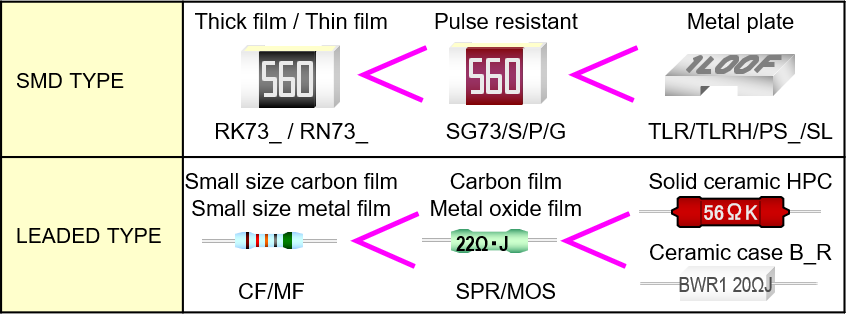What are high pulse-resistant and surge-resistant resistors?
Pulse/surge resistant resistors are resistant to damage caused by instantaneous applications of large power or high voltage.
Among SMD type resistors, thick film chip resistors(metal glaze film type) are generally more pulse resistant than metal-film chip resistors. Thick film chip resistors with special construction, SG73, SG73P, SG73G and WG73 are made more pulse resistant or surge.
Also, metal plate chip resistors for current sensing have strong resistance to pulse and surge because their resistive bodies are made of metal plates.
For the leaded type resistors, wire-wound type resistors with the metal resistive wire around the insulator such as CW, CW-H, RW, BGR and BWR are relatively stronger in pulse resistance than metal film or carbon film resistors with resistor film formed on the surface of the insulator.
Solid type ceramic resistors HPC and PCF with ceramic resistive body have extremely strong pulse resistance.
Resistor that are strong against surge are resistant to instantaneous high voltage such as ESD. SG73S with guaranteed ESD resistance falls under this category.
Pulse Resistance Level by resistor type(image)
